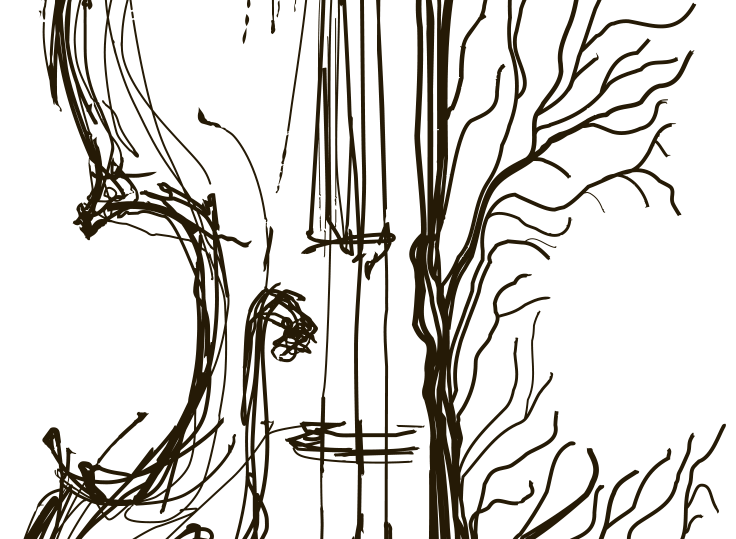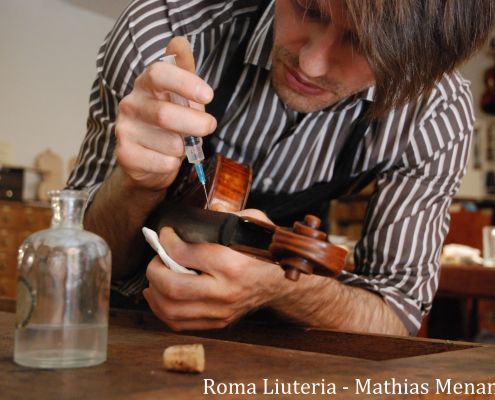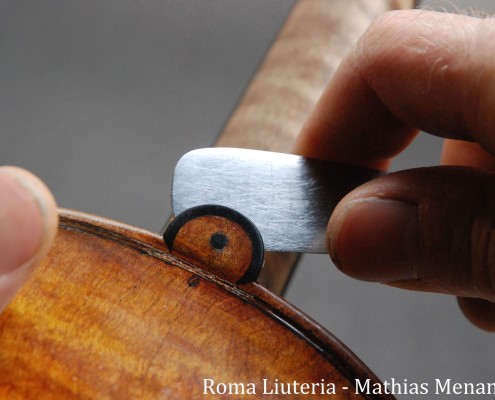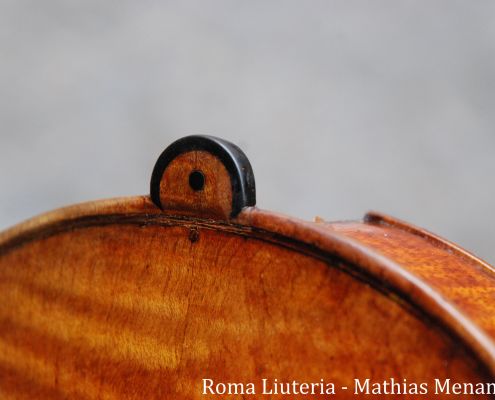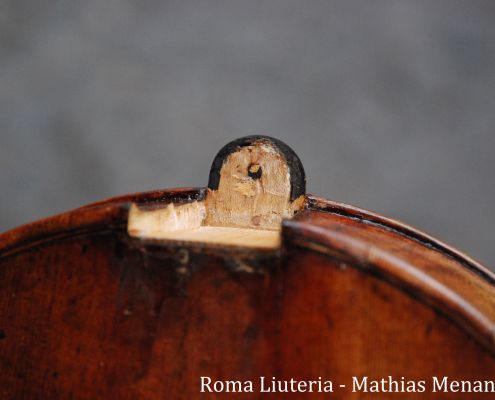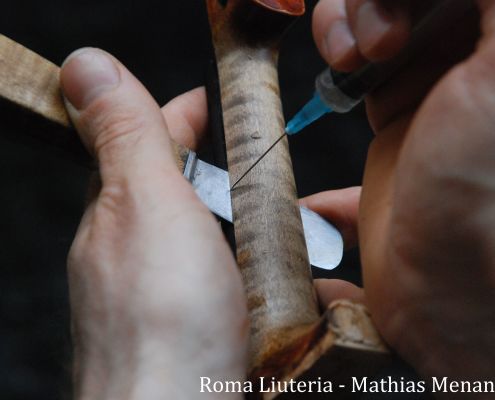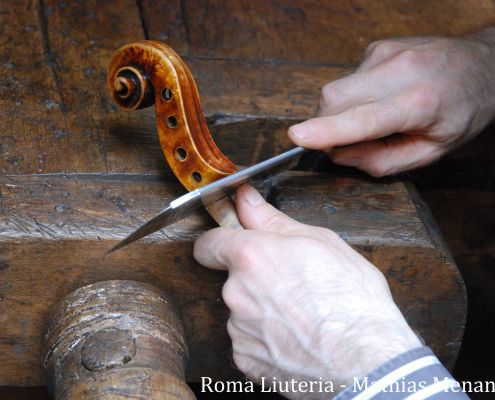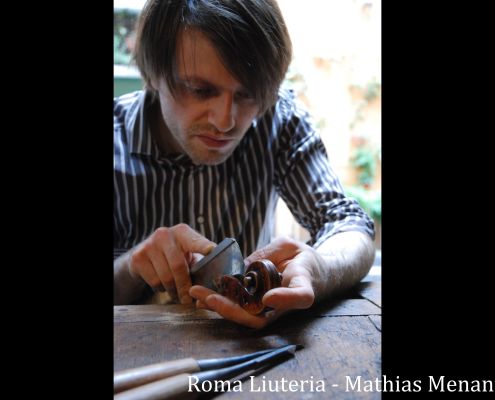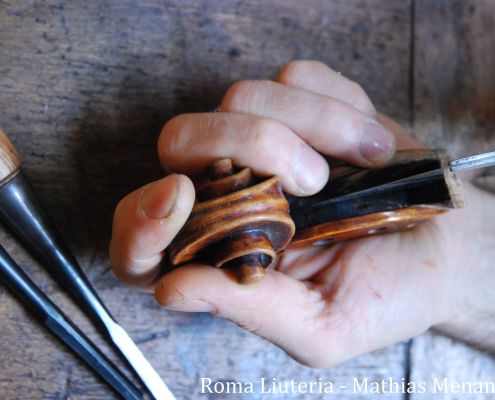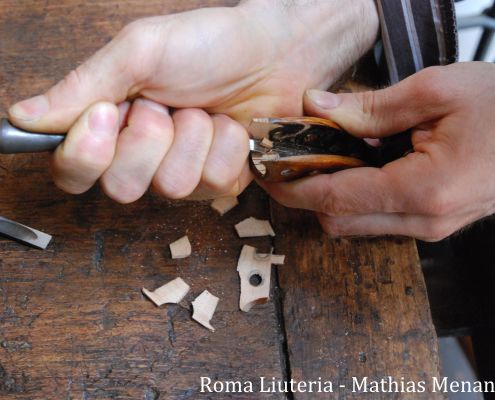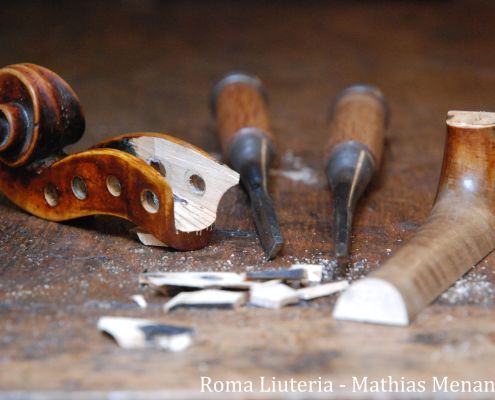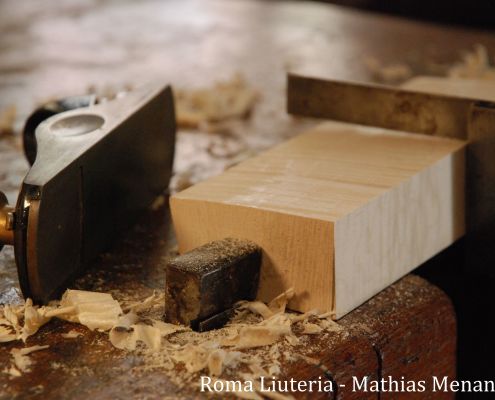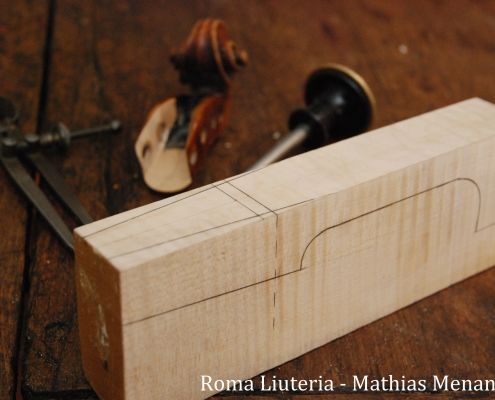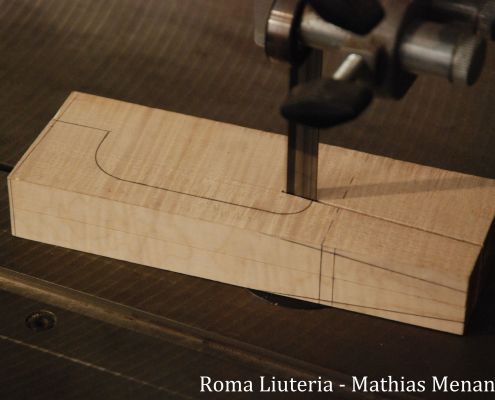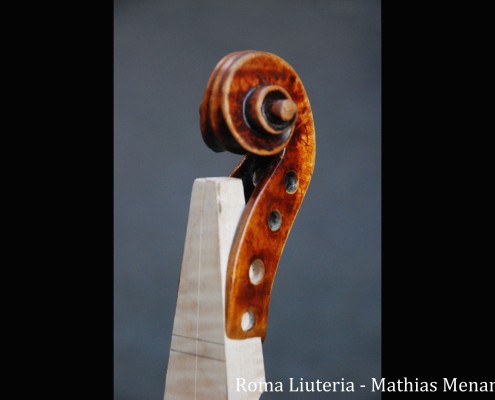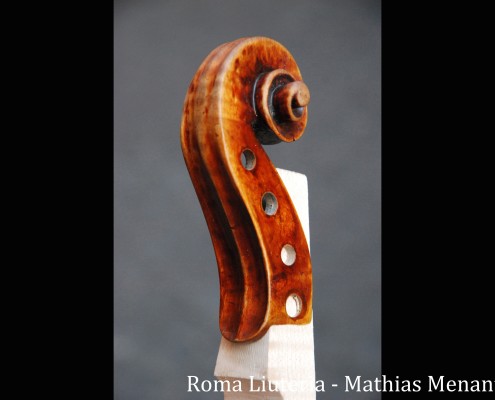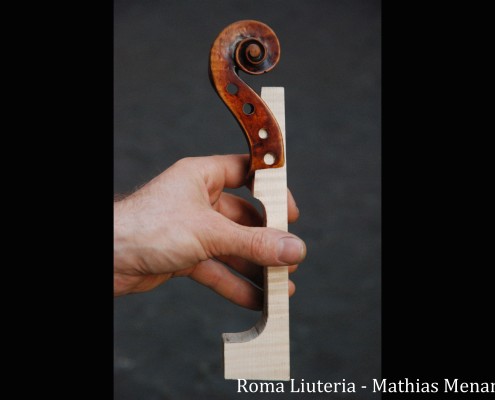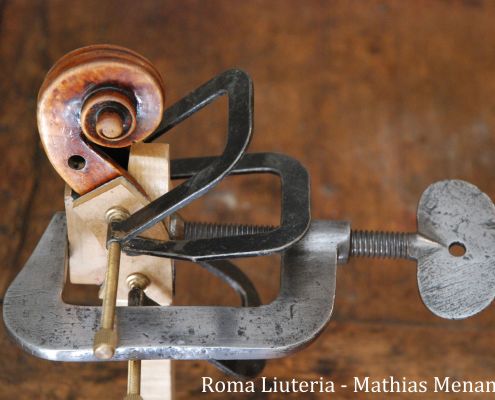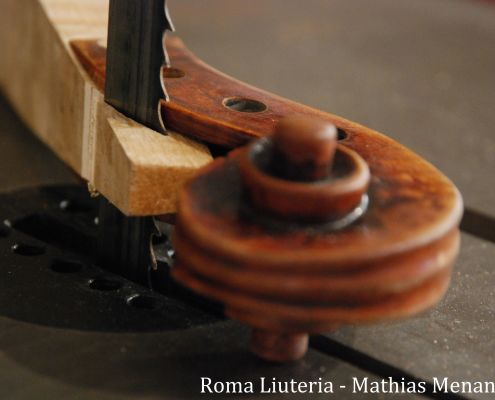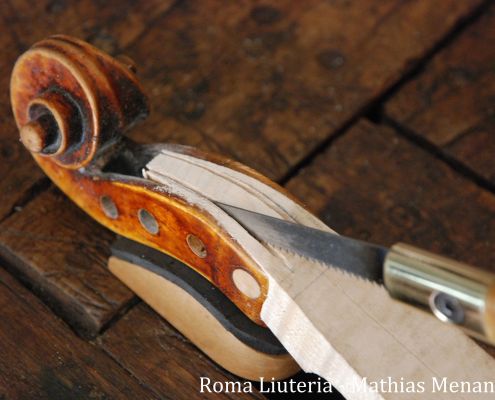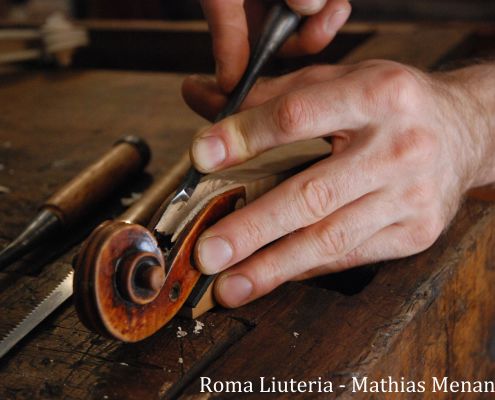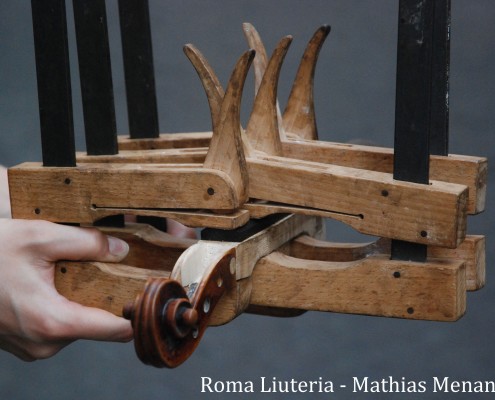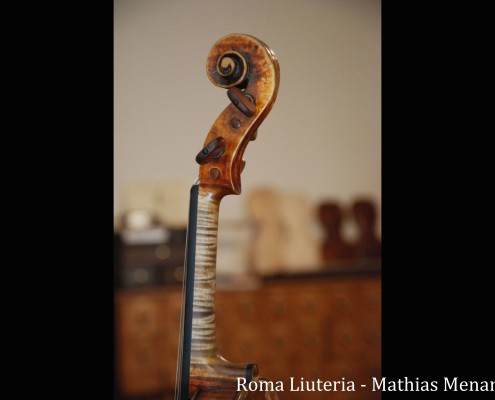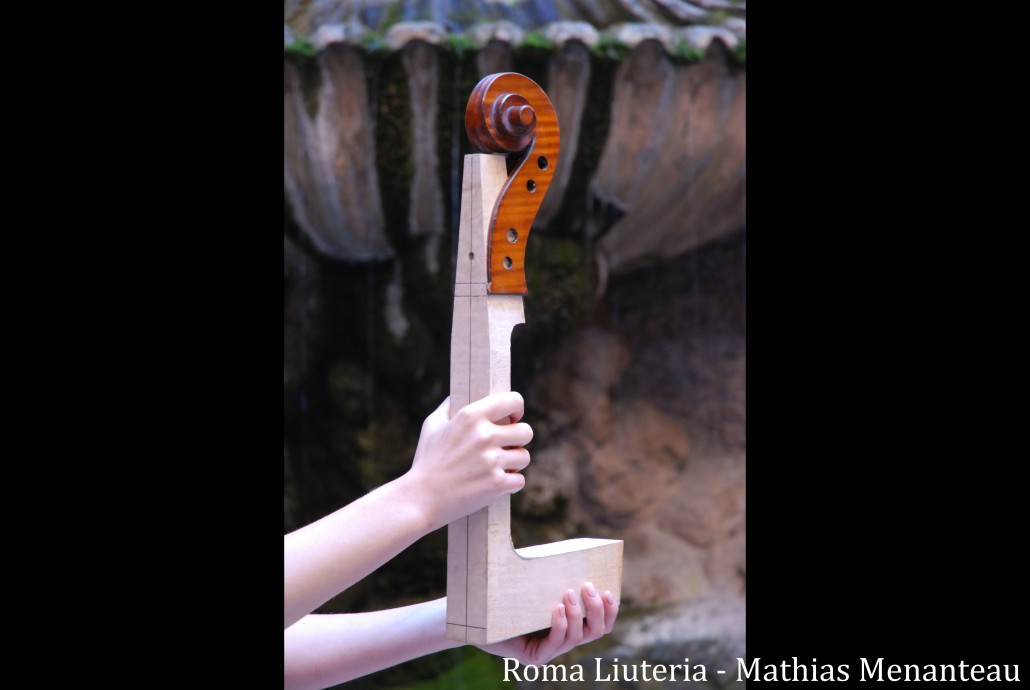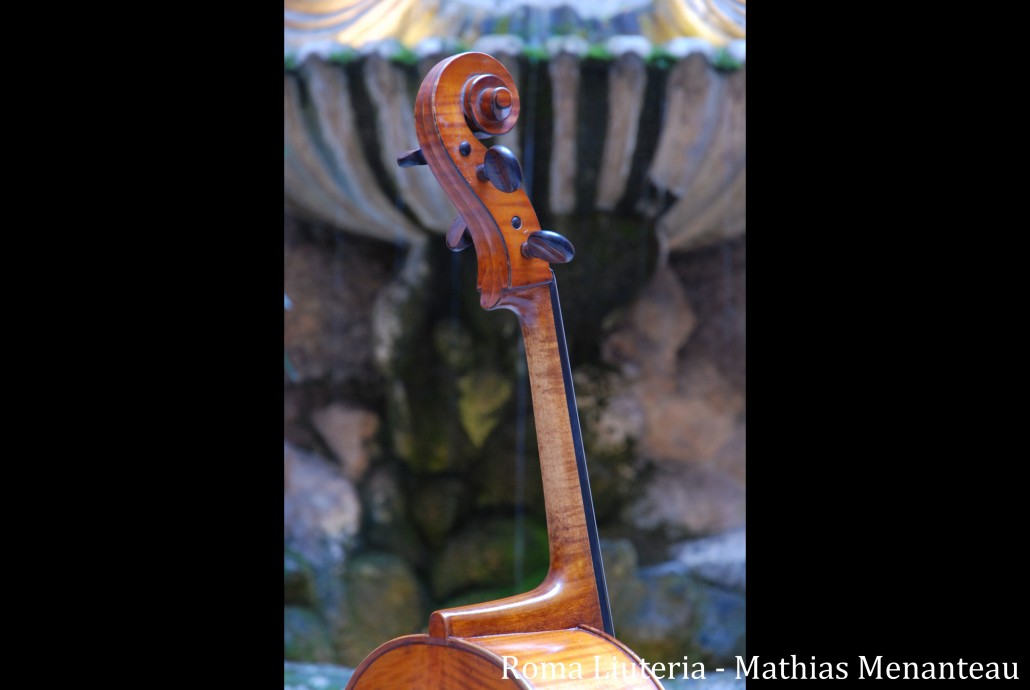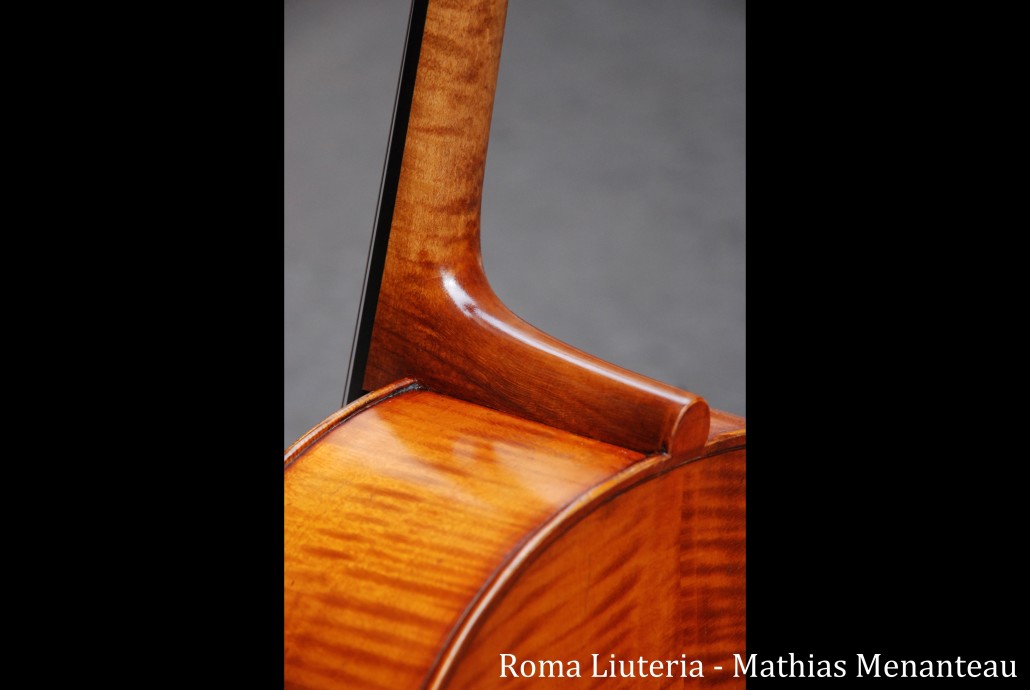The neckgraft, a great classic of restoration work
The neckgraft consists in adapting a new neck, which fits into the original head. It is an ideal solution when the neck is broken or has become too worn down.
It was an evolution before it became a restoration technique. Indeed, the violin as we know it today has undergone quite a few physical changes over the centuries, one of which being the extension of the neck. Only a few Stradivari still have their original necks. Makers in the 19th century used to cut out the original neck and replace it with a new and longer one, so as to adapt the violin to the emerging playing style of the time.
Step-by-step neckgraft on the “Comte de Cabriac” violin of Giuseppe Guarneri (1711), belonging to Maestro Francesco D’Orazio.
Before the invention of the neckgraft, numerous instruments had their necks replaced, along with the heads. The reason so many instruments no longer have their original heads, is not because of the French Revolution! Restorers started to modify all antique violins, violas, cellos and double basses following this method from the middle of the XIXth century, opening a mortise in the top block, into which the new neck was fitted and its angle increased. Before then, in the 1850s, necks were glued and nailed to the ribs (the maple belt connecting the back to the table). Thus, the “modern violin” is subject to more pressure, resulting in more powerful sound. This radical change led to a change in the bassbar (now thicker and longer) as well as the bridge.
M. Menanteau, Rome 2010
Other examples
Kindly note that the entire contents of the website are subject to copyright with all rights reserved.
